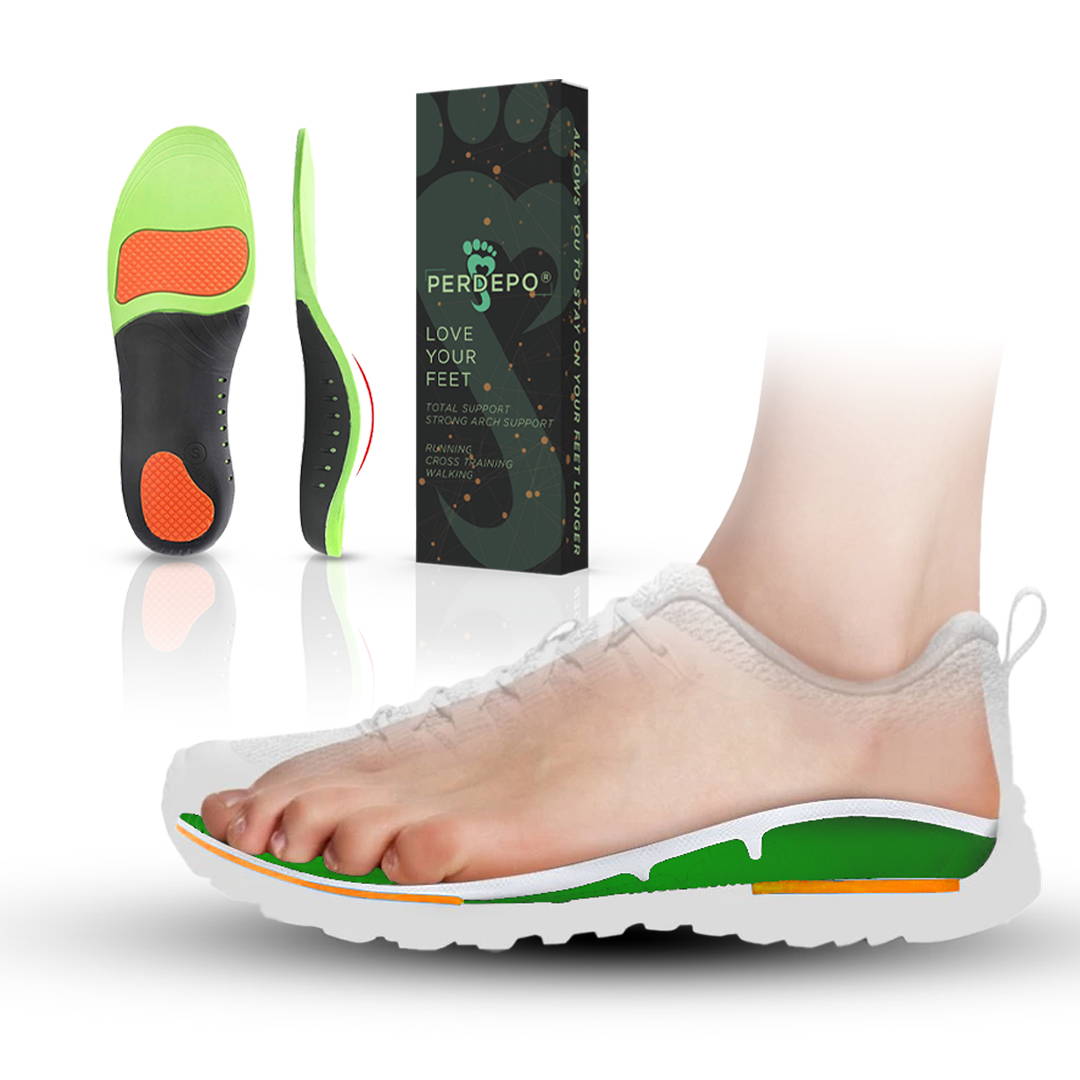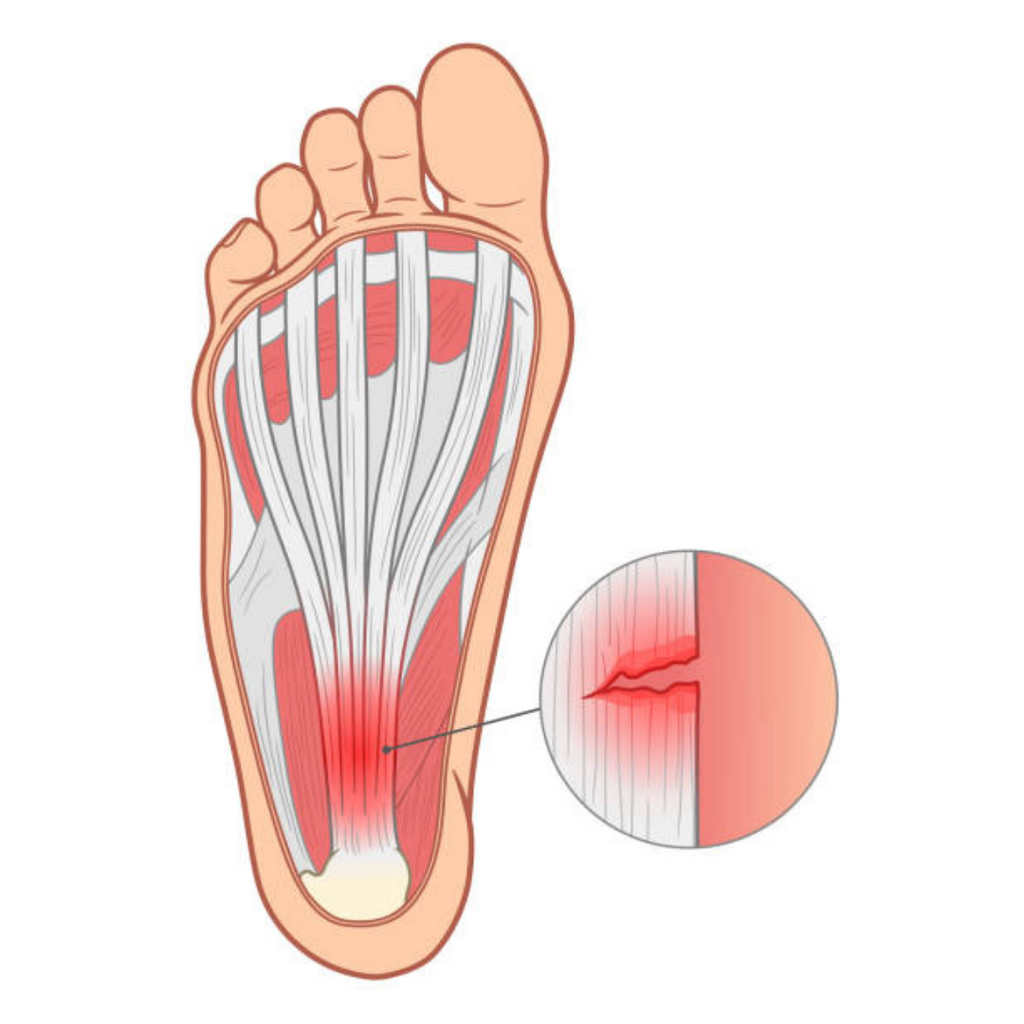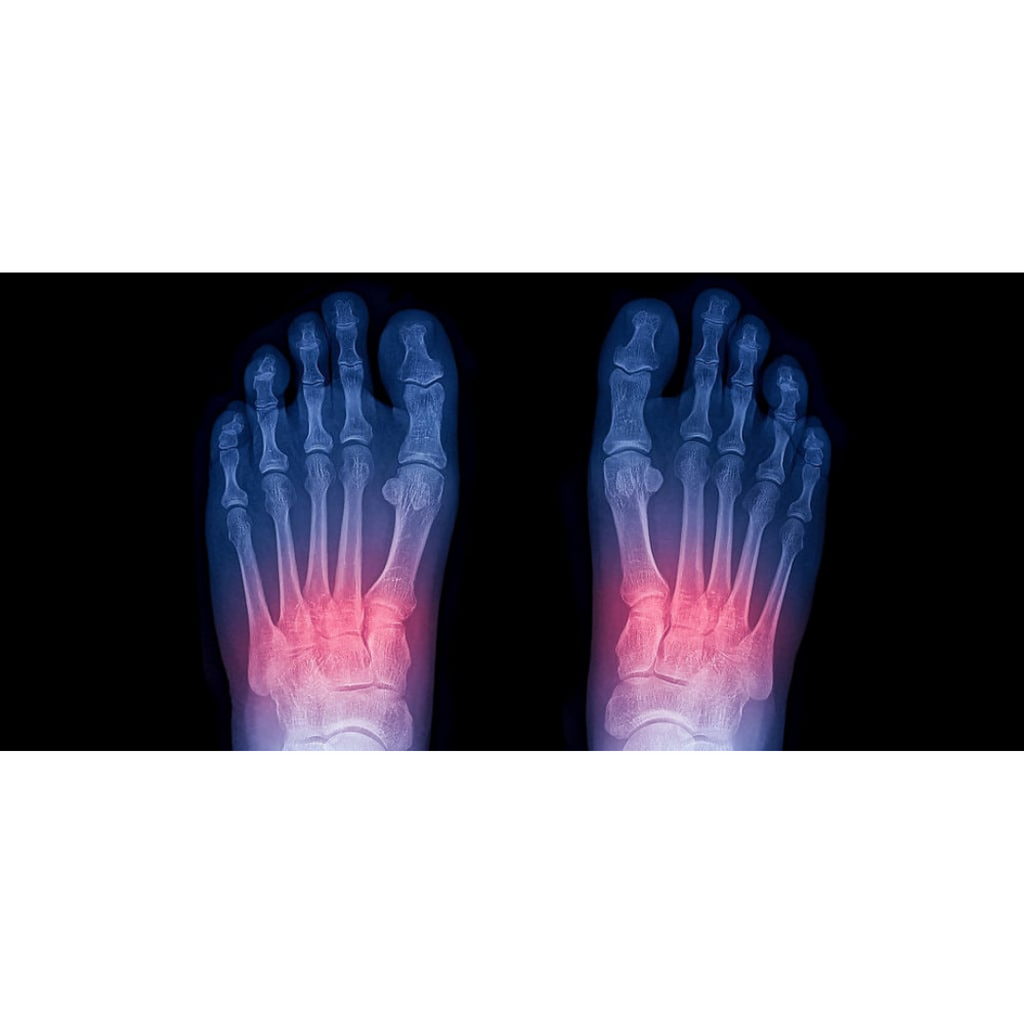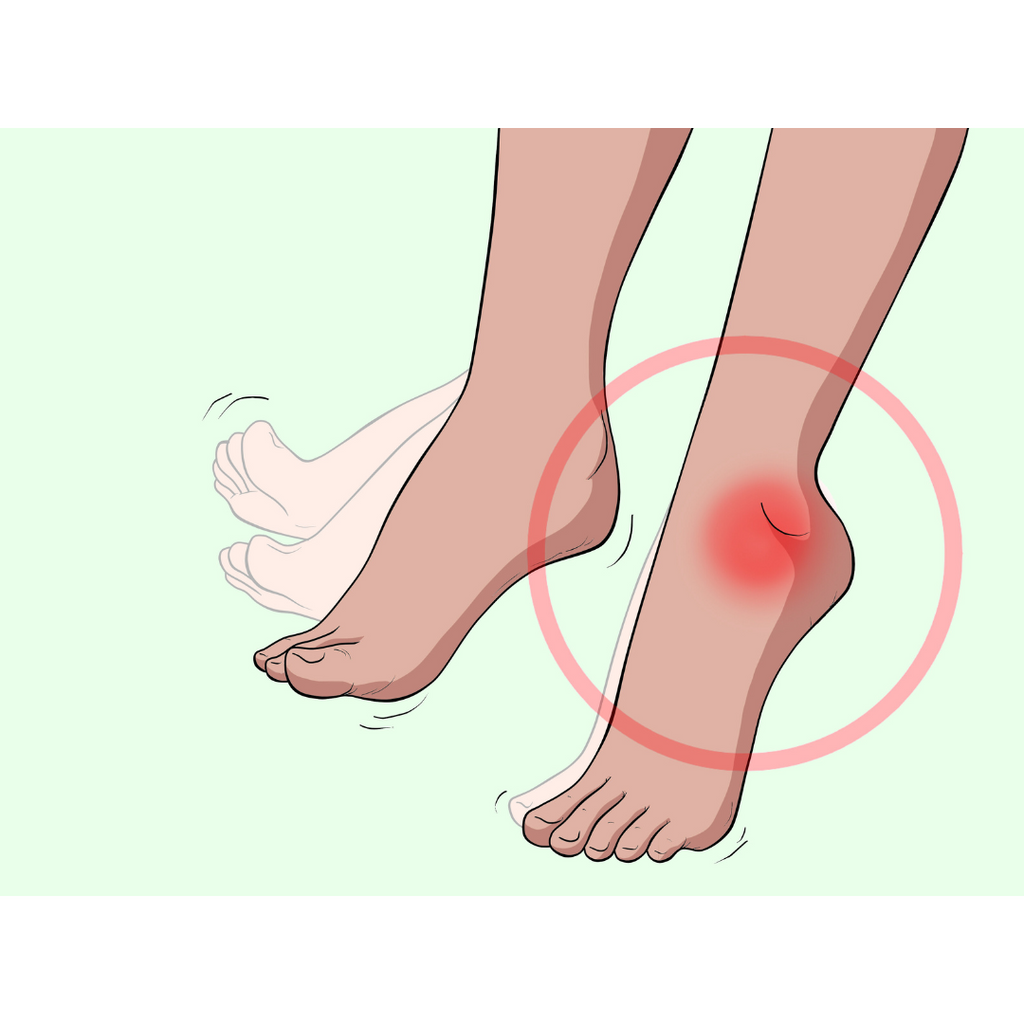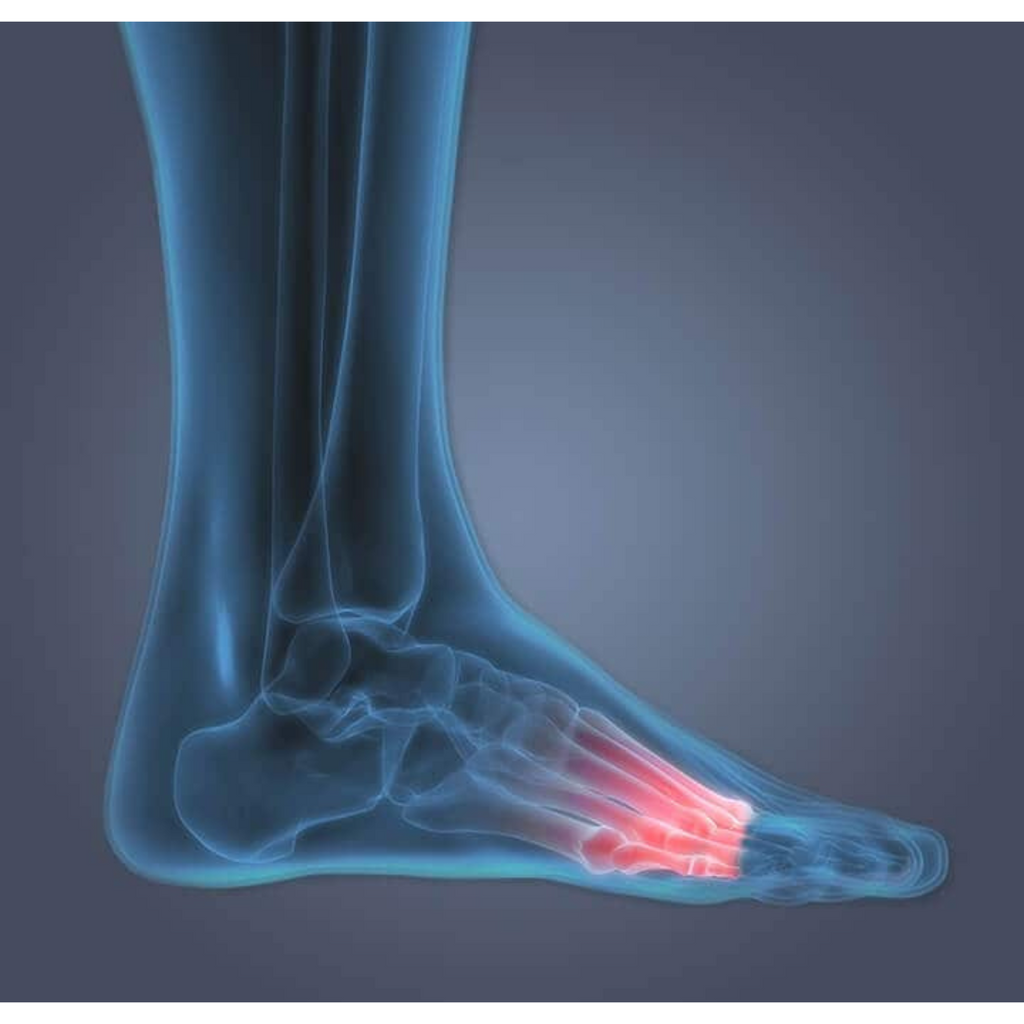Getting out of bed in the morning is an unpleasant task in and of itself, so my heart goes out to those suffering from plantar fasciitis, a condition characterized by a stabbing sensation in the heel that frequently coincides with the first steps of the day. This pain may also worsen when you get up from a sitting position or after engaging in strenuous activity.
What Is Plantar Fasciitis?
The term "plantar fasciitis" refers to the thick tendon that connects your heel to your toes, forming the arch in your foot. Extra weight, unsupportive shoes, prolonged standing on hard surfaces, and certain athletic activities that place a lot of stress on that region of the foot, such as ballet or distance running, can cause this tendon to tear and become irritated, resulting in sharp pain in the heel.
Plantar fasciitis is characterized by a stabbing sensation in the heel that usually occurs with the first steps of the day. The pain usually subsides after a few minutes of moving around and limbering up the foot. Similarly, the stabbing sensation may appear when one stands up after sitting for an extended period of time. The pain may also return after spending long periods of time on your feet or engaging in strenuous physical activity.
What Causes Plantar Fasciitis?
The painful condition is named after the tissue that causes it, plantar fasciitis. The plantar fascia is the thick tissue at the bottom of your foot that connects your toes to your heel bone and forms the arch.
According to the Mayo Clinic, the plantar fascia is like a bowstring that absorbs shock and supports the arch of the foot. Small tears in the ligament may form if the tension becomes too much. Repetitive tearing or stretching of the tissue inflames and irritates the fascia, resulting in heel pain.
Plantar fasciitis is a condition that gradually worsens over time and usually (but not always) affects only one foot.
Who Suffers from Plantar Fasciitis?
Women and people between the ages of 40 and 60 are more likely to suffer from this condition. It is also more common in people who are obese or pregnant. Plantar fasciitis is more common in people who participate in activities that put stress on the heel and related tissues, such as ballet or long distance running. Plantar fasciitis is more common in people who spend long periods of time standing on hard surfaces (for example, teachers, hairdressers, and soldiers).
People with flat feet, high arches, or an abnormal walking style are more prone to this condition. Plantar fasciitis is also more common in people who have shoe collections similar to mine, which is dominated by soaring heels (I tend to overcompensate for my short stature), a few thin-soled flats, and a plethora of fluffy, loose-fitting slippers. They all have one thing in common: they do not provide adequate support.
Fortunately, most cases of plantar fasciitis can be treated conservatively, such as staying off your feet, stretching the arches, icing the foot, adding orthotic plantar fasciitis insoles to your shoes, and wearing night splints to promote healing while you sleep.
Physical therapy aimed at strengthening your feet and lower calves can also improve pressure distribution across your feet, relieving plantar fasciitis and preventing another flare-up.
Anti-inflammatory pain relievers can be taken, or cortisol can be applied to the affected area via injection or as a solution. Shockwave therapy or surgery may be considered in more severe cases.
Visit Perdepo's extensive resource library with many articles about foot conditions like Plantar Fasciitis to learn more about its symptoms, causes, treatment, and prevention.
Perdepo also carries a full line of Plantar Fasciitis orthotics to help relieve your plantar pain without requiring surgery.
Foot Plantar Fasciitis Treatment
Fortunately, the vast majority (90 percent) of plantar fasciitis cases can be treated in a matter of months using relatively noninvasive methods. However, it is critical to seek treatment because if this condition is not treated, it will most likely alter one's walking style, which can then manifest into problems with other areas of the foot, knee, hip, or back.
Nonsteroidal anti-inflammatory drugs, or pain relievers like Aleve or ibuprofen, are commonly prescribed by doctors to treat pain. Corticosteroids are another drug used to treat an inflamed plantar fascia. They are usually applied as a solution that is absorbed with the help of an electric current, but they can also be administered via injection.
Participating in physical therapy aimed at stretching the affected areas of the foot and strengthening the lower region of the leg to improve the stability of your foot and ankle is another way to address the problem and prevent it from recurring.
Orthotics for Plantar Fasciitis Pain
Arch supports (also known as plantar fasciitis orthotics) can be worn to help distribute pressure more evenly across the foot.
A therapist may also advise you to wear night splints as a treatment for plantar fasciitis. These splints stretch the Achilles tendon and calf muscles while the user sleeps, treating the condition. Plantar fasciitis can be treated with a variety of night splints from Perdepo.
Shockwave therapy to stimulate healing is one of the more extreme methods of treating plantar fasciitis, and when all else fails, surgery is an option.
Chronic Plantar Fasciitis Prevention
When considering the causes of plantar fasciitis, most at-home remedies and prevention techniques are fairly obvious. Staying off one's feet for a few days to allow the plantar fascia to heal, as well as foot massages, arch stretches, and icing the affected area, can be beneficial.
If the injury was caused by sports, one should reduce the distance or amount of time spent on athletic activities that are especially taxing on the heel, and perhaps even switch to lower-impact sports like swimming. Maintaining a healthy weight also reduces the likelihood of developing plantar fasciitis.
As previously stated, adding arch supports to one's shoes can help. It is also critical to replace athletic shoes on time and to wear shoes that provide adequate support.

